Preparing deer hide for rawhide lace
We are no longer building saddle trees, but we have two videos about how Western saddles fit horses available on our westernsaddlefit.com website.
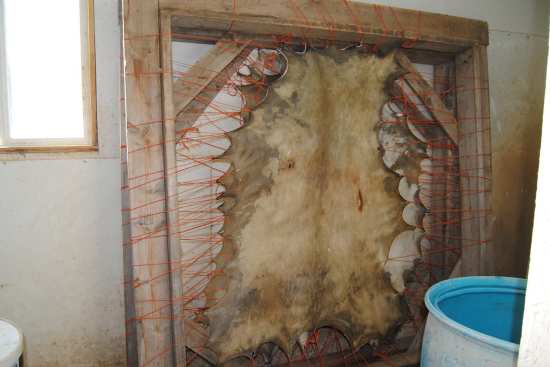
We make our own deer hide lace from hides off deer harvested by local hunters, including Rod. (Venison tastes good!) Hunting season for deer closed the end of November, so this is the time of year he makes up the rawhide for the lace.
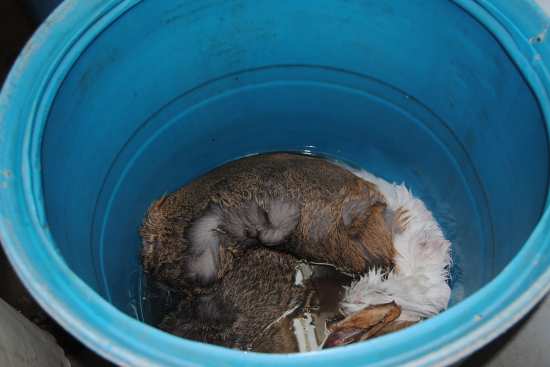
Deer hair is hollow with air in the middle. This is great for insulation for the deer during the cold winter, but not so great if you are trying to soak the hides. Unlike the hides of cattle, deer hides float.
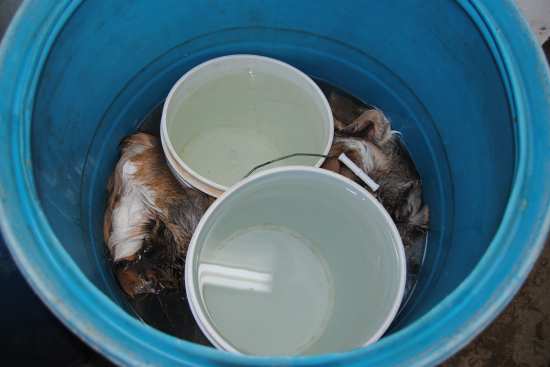
So we have to weight them to keep the hide down in the water. Five gallon pails filled with water on top of the hides do the trick.
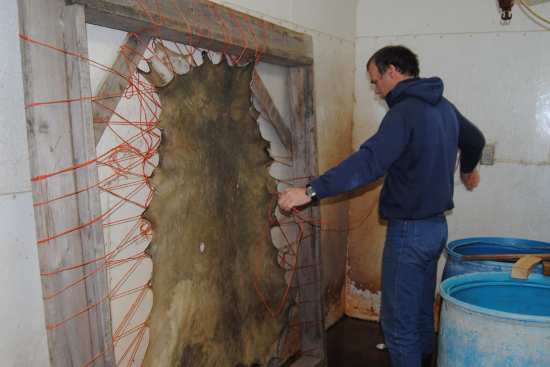
Deer rawhide is made the same way cattle rawhide is made. Then the hides are strung up to dry. Rod puts one on each side of the two frames we have so we can dry four at a time. Here he is taking the dried hides off the frames.
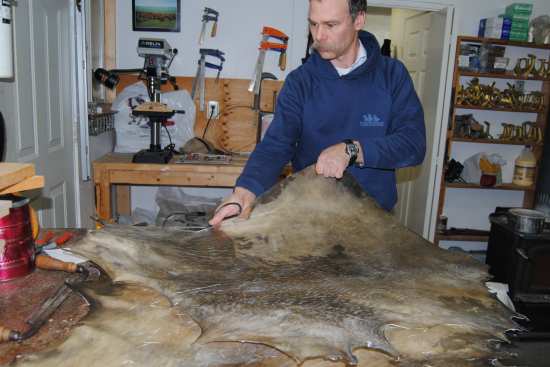
Then the rough edges are cut off
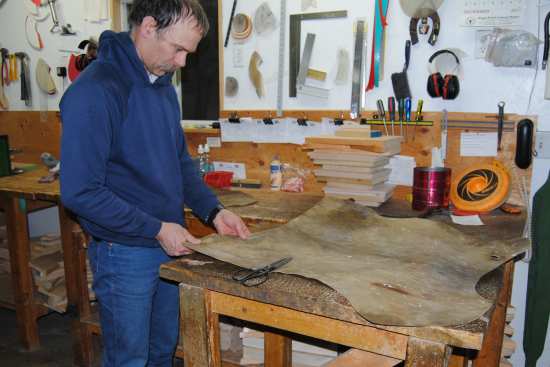
and he evaluates the hide by feel for areas that are too thin and need to discarded. After that, he checks for thickness and consistency.
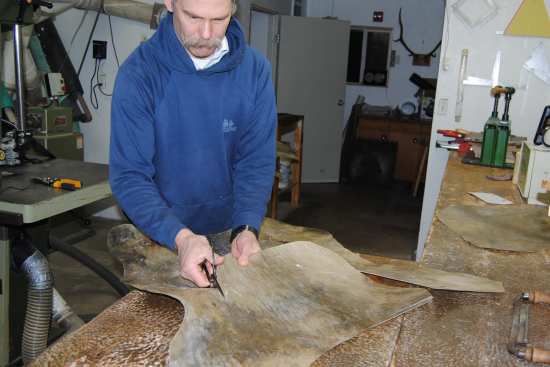
He cuts approximate circles out of areas of the same thickness so the lace from one circle will be as even as possible. Thicker hide gets cut into thinner lace and vice versa.
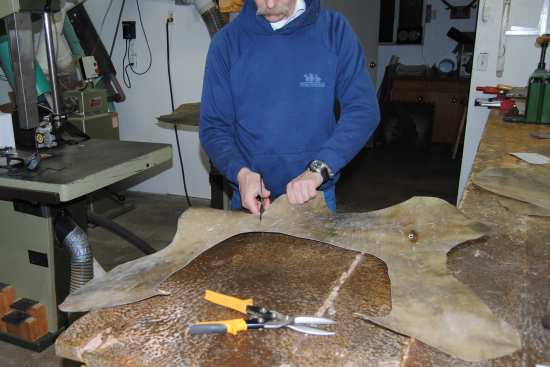
Once the bigger sections have been removed, he cuts smaller circles from the parts remaining, since they are still useful, although a bit thinner.
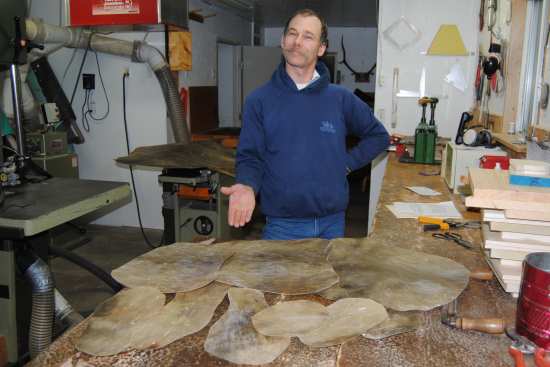
Ta da! All the circles from one hide, ready for making lace, brought to you by your friendly neighbourhood saddle tree maker!
